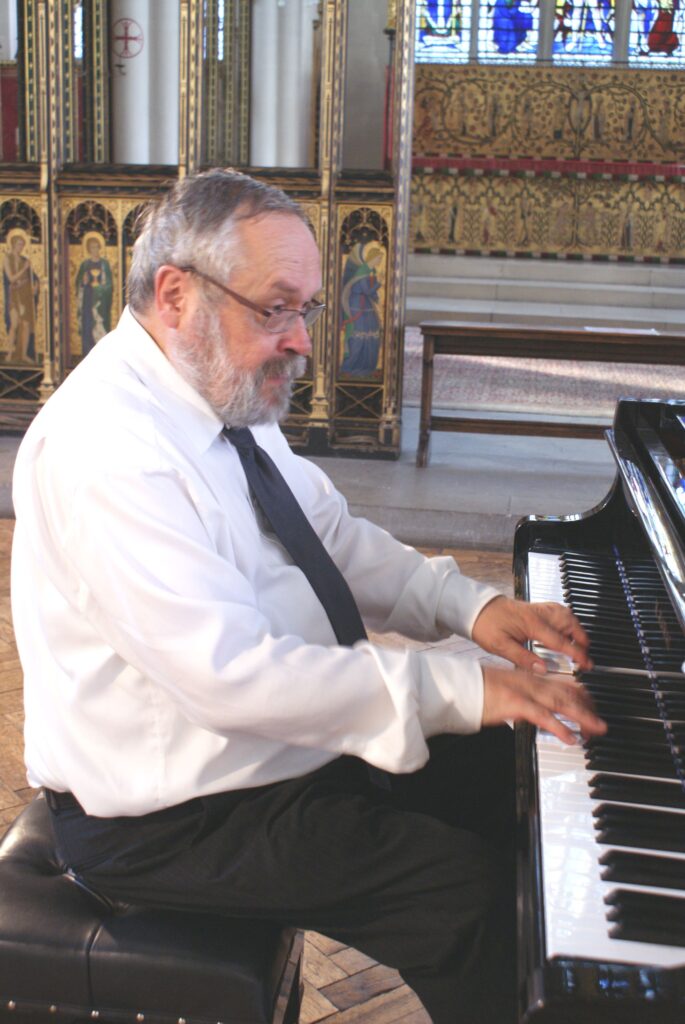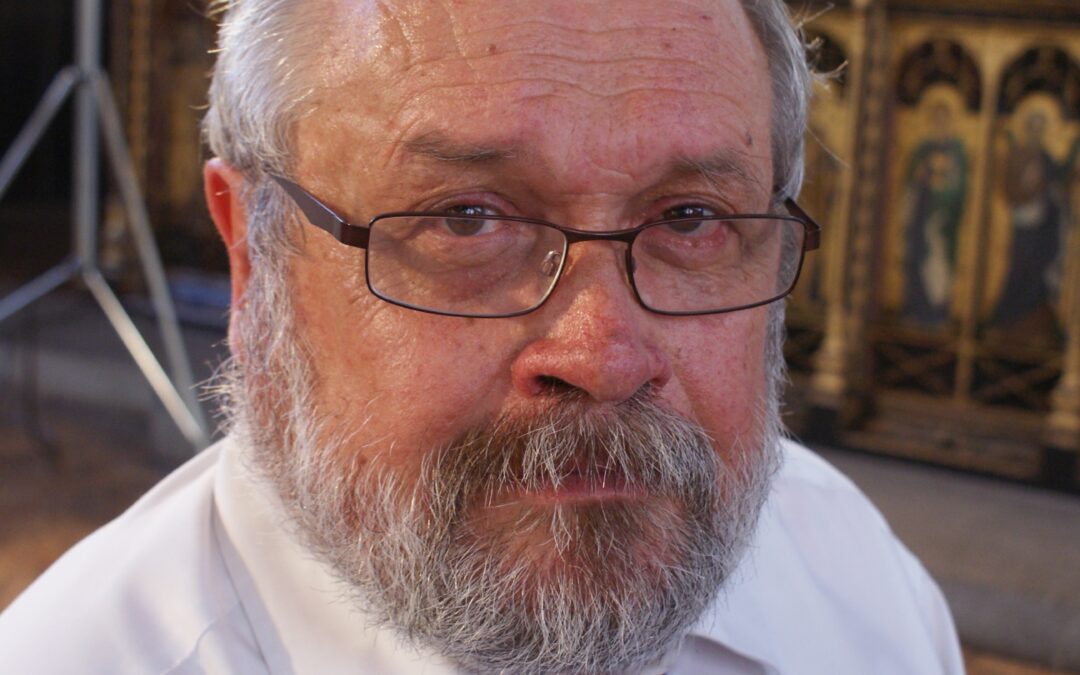6 January 1946 – 20 December 2024
The late and much-lamented Anthony Green was a prolific composer, fine pianist, an inspiring teacher and an indefatigable and loyal champion of the music of his contemporaries.
He received piano lessons from firstly his father, then Tanya Polunin and James Gibb. He studied harmony, counterpoint and composition with Anthony Milner and the latter also with Hugh Wood and Melanie Daiken. From 1979 to 1981, a British Council Scholarship led him to study composition with Zsolt Durko and piano with Istvan Lantos and Imre Rohman at the Liszt Academy in Budapest.
He was a finalist in the BBC Beethoven Chamber Music Competition (1969) and also in the British Liszt Piano Competition (1976). For many years from 1990, he taught piano at Trinity College of Music where he also lectured on Romantic and Contemporary music.
In a letter dated 28 January 2013, Tony wrote to me about his father and the following quotes from it are illuminating:
“My father, Frederick Green (1908-87) was a keen amateur musician… My own love of Liszt’s music originates in hearing my father play through such pieces as the B minor Sonata, ‘Funerailles’, ‘Les jeux d’eau a la Villa d’Este’, and the Variations on Bach’s ‘Weinen, Klagen’.
“I am grateful that he made me play piano duets, mainly arrangements of symphonies by Haydn, Beethoven, Schubert, Mendelssohn and Tchaikovsky, and orchestral pieces such as Mendelssohn’s ‘Hebrides’ overture and Liszt’s ’Les Preludes’ – I got to know a lot about music this way and it made me a fluent sight-reader.”
The mention of Liszt’s Sonata reminded me that I once attended a piano recital by Tony and that particular work concluded what was a long programme of quite difficult pieces. His performance of it was quite stupendous. Also in the audience was a mutual friend and fellow composer, Sydney Vale, who for weeks afterwards continued to express his admiration for Tony’s heroic interpretation.
Tony’s early inspirations and influences were Messiaen, Busoni and Schoenberg, with, later, Ives and Elliott Carter. Although he started by writing serial music, he later used a technique of continuously developing variation of a basic musical idea involving a mathematical permutation of intervals. A number of shorter pieces were impressionistic in character and inspired by places and landscapes in Scotland.

He cited Palestrina as a major influence on his contrapuntal technique and the preoccupation with linear development of melodic lines was the natural result of that. When asked about harmonic direction, he said that he thought primarily in horizontal terms but the harmony ‘had to work’.
He wrote several orchestral items and some vocal pieces, but his virtuosity as a pianist meant that it was inevitable that much of his output was for that instrument, either alone, or as piano duet or in combination with other solo instruments, including all members of the string and woodwind families.
Amongst his many piano arrangements was of Bruckner’s 9th Symphony; an illuminating article by him about it appeared in Modus Music News No. 45 revealing his attitude towards Bruckner’s music and his methods of arranging it:
‘A well-known writer on music (I think it was Deryck Cooke) said that one goes to Bruckner for refuge. This was my personal experience, as I was going through a bad patch in the mid-1960s and received a lot of comfort from the lofty idealism and spiritual strength of his music.’
It must have been sometime in the late 1970s that I first met him, at a Composers’ Workshop in London. As time went by, I met him more frequently at London concerts, including some at the British Music Information Centre. Other concerts were generously funded by himself presenting his own works and also to premiere new pieces by his friends and other contemporary composers whom he admired. Seven of my pieces received performances by him including four premieres.
Most of his main compositions were lengthy, requiring fortitude from not only the performers but also from the listeners. However, he wrote a number of smaller pieces that were impressionistic in character and were inspired by places that he had visited, including Scotland and the southwest of England.
Many of these ‘landscape’ pieces evoke the harsher, rugged beauty of their subjects, rather than gentler pastoral images.
In 2005, Fonorum issued a disc (LC 13473) of five of Tony’s works played by the composer himself. This included the ‘gentle and reflective’ Beinn Spionnaidh, one of his Six Sutherland Eminences, and In Memoriam John Bingham, written in commemoration of the distinguished pianist of that name. Bothareideal starting pieces for listeners new to Tony’s work.
The other lengthier items offer more adventurous terrain to navigate: Sonata No.3, Variations on a note-row by Ingvo Clauder and the composer’s own arrangement of his Resurgence for Orchestra. The record was later reviewed in ‘Tempo’ by Colin Clarke, who wrote ‘Green is clearly a superb pianist’ and referred to the Variations as a ‘most assured composition’.
My own memories of Tony recall him as being an honest and amiable ‘character’, erudite without any hint of boastful show. He was always at the service of the music he performed, much of which was that of his composer friends, all of whom definitely owed him a great debt of gratitude.
At his funeral on 21st January 2025, his friend Nick Ray gave a fine eulogy and said that ‘in an age of ruthless self–promotion, his innate modesty and reticence were always going to be a disadvantage to him, but those qualities were loved’. He will be missed but always remembered with genuine respect and affection.
Written by Frank Bayford

